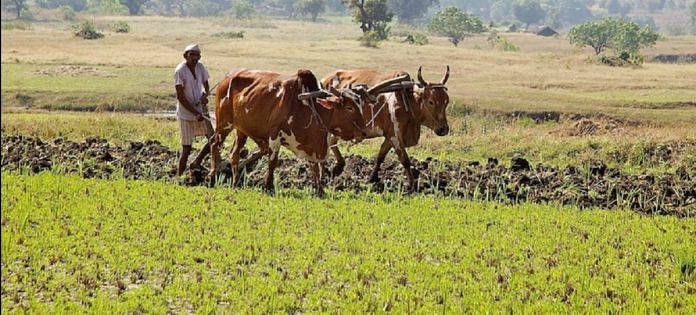Farmers’ bodies and experts say the key to any benefit to farmers lies in how the production cost or the cost of cultivation is calculated.
Chandigarh: One of the most significant takeaways from the Union Budget presented by finance minister Arun Jaitley Thursday was the proposed increase the minimum support price (MSP) for all unannounced kharif crops to at least one-and-a-half times the production cost.
The announcement is expected to directly impact lakhs of paddy, cotton, maize and sunflower growers in Punjab.
But farmers are not celebrating, at least not yet. Farmer bodies and experts have been quick to point out that the key to any benefit to farmers on this account lies in how the production cost or the cost of cultivation is calculated.
Punjab finance minister Manpreet Singh Badal said the devil is in the detail. “The cost of cultivation is the main thing. How will the government of India decide on an across-the-board formula?” he asked.
“We will be more than happy if the government of India accepts the recommendations made by the Ramesh Chand Committee, and implements them.”
What experts recommended, and what they got wrong
The Ramesh Chand Committee was set up in 2013 by the UPA government, and submitted its report in March 2015. Its chief, Ramesh Chand, was then director of the National Institute for Agricultural Economics and Policy, and is now part of the NITI Aayog.
The committee recommended deficiency price payment for crops for which an MSP is declared but purchase at that rate doesn’t actually take place. It also recommended that the calculation of cultivation cost must including several overhead and hidden costs incurred by farmers, including interest on working capital estimated for the entire period of a crop season, land rental values based on actual rates, and interest and depreciation on fixed capital at the rate of inflation in construction material.
Punjab’s agriculture commissioner B.S. Sidhu criticised the committee’s recommendations. “These recommendations lack a realistic appreciation of the costs incurred by farmers’ taking loans for seeds and other raw materials when the crop is sown,” said Sidhu.
He added that the calculations were flawed because these were done on the basis of presuming that the labour used in cultivation was unskilled. “The labour used in agriculture is not unskilled. Farmers have been demanding that cost of calculation should treatment as skilled labour. Once that is done, the rates will be closer to actuals,” he said.
“In Punjab, for instance, according to our calculations, based on what the farmer really spends, we had demanded an MSP of Rs 2,180 for wheat, but we got Rs 1,735 per quintal. Similarly, for paddy, we get Rs 1,580, but the cost incurred by the farmer is more. We will be announcing our demanded MSP rate for paddy soon,” Sidhu said.
Balbir Singh Rajewal, president of the Bhartiya Kisan Union (Rajewal), said the budget provisions related to agriculture were a bid by the finance minister to mislead Parliament.
“Did a fixed cost of production settled for this year rabi crop take into consideration the daily increasing cost of diesel? Also, in order to calculate the cost of cultivation, the land renting or lease amount is fixed at Rs 20,000 per acre for a year. This, in reality, is as high as Rs 50,000,” he said.
Meeting a long-standing demand, but not much else
Agricultural economist Sucha Singh Gill at the Centre for Research in Rural and Industrial Development, Chandigarh, said the budget met the long-standing demand of the farmers with the announcement that MSP will now be one-and-a-half times the cost of production.
“The MSP rates are fixed on the recommendations of the Commission for Agricultural Costs and Prices (CACP), Department of Agriculture and Cooperation, Government of India. They take into account the cost of production. But apart from this, there is nothing to cheer about in today’s budget,” he said.
“The outlay of Rs 500 crore to address the challenge of price volatility of perishable commodities like tomato, onion and potato is of no use in Punjab as potato farmers are heavily dependent on middlemen to pick up the produce within days of harvesting. The middlemen store them and sell them at higher rates,” Gill said.
He also rued that there was no talk of unemployment arising due to shrinking agriculture. “It is too late now to try and double the income of farmers by 2022. So that is mere rhetoric,” Gill added.






